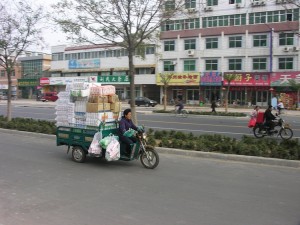In my first article on 3PL, I explored the concept and some of its advantages and disadvantages. In this article, I will explain why I think 3PL will become more and more important for global health and aid.
The push for economy
Rightly or wrongly (and if you followed this blog you know where I stand on that question), there is a big push from donors to economise on ‘HQ’ or ‘overhead’. This means that the pressure is on to decrease the size of departments in headquarters, including logistics departments[1]. Conversely, when there is a crisis, it is fairly easy to get donors to fund the necessary extra capacity that is needed specifically for that crisis. This fits very well with the 3PL model: when there is a crisis, we can quickly ‘buy’ additional capacity.
Of course, this is sound thinking anyway, even apart from donor pressure: why would you want to pay for capacity when it’s not necessary? Large logistics departments are often legacies from a different era, when it was normal to have everything in-house and outsourcing was unheard of.
The move to urbanised settings
 As more of the world’s population is concentrated in urbanised areas, more of our work is done in those areas too. Especially in aid, the idea that our work would take us mostly to out-of-the-way locations in the bush, is thoroughly antiquated: more and more, we work in the shantytowns, slums, barrios, favelas, or whatever they might be called. Local 3PL contractors (see the picture to the right for a good example) are at an advantage here compared to having our own transport fleet. Specifically for aid activities, an added bonus is that we pour more money in the local economy instead of using the iconic, imported white landcruiser.
As more of the world’s population is concentrated in urbanised areas, more of our work is done in those areas too. Especially in aid, the idea that our work would take us mostly to out-of-the-way locations in the bush, is thoroughly antiquated: more and more, we work in the shantytowns, slums, barrios, favelas, or whatever they might be called. Local 3PL contractors (see the picture to the right for a good example) are at an advantage here compared to having our own transport fleet. Specifically for aid activities, an added bonus is that we pour more money in the local economy instead of using the iconic, imported white landcruiser.
But even more conventional 3PL providers have an edge here: unlike in many more rural areas, they do have a presence in and knowledge of most cities and many towns. I haven’t worked in any capital yet in which they were not represented, and very few larger towns.
New models of cooperation
Many 3PL providers are actively trying to acquire knowledge of and expertise in fields that were traditionally the preserve of specialised organisations like NGOs and ministries of health. They see large growth opportunities and are keen to get on board, learning as they go in order to be able to deliver better quality than the competition. This also means that they are prepared to cooperate in new ways, using new models that are a better fit with global health and aid work; e.g. temporarily stationing staff within a logistics unit to improve support and communication, or helping to make information systems interoperable (something I will write more about in the next article in this miniseries). For us, this is a big opportunity to improve our effectiveness and efficiency by using what the providers offer in the way of expertise and (not unimportantly) funds and operations scale.
Where this will lead us
It will be clear that the use of 3PL can have big advantages for global health and aid. However, to be able to use the opportunities that are offered, we will need to work hard on some of our outlooks and practices. In the next article in this series, I will describe what this will mean for how we work.
[Images by Erik Söderström and C. Frank Starmer. Some rights reserved.]
Footnote
Back to post [1] This is actually becoming a bit less of an issue for health authorities now that there is more attention for ‘systems strengthening’. Perversely, it is actually becoming more important for aid organisations.


{ 2 comments… read them below or add one }
One aspect of 3PL that I found interesting Haiti recently (and ongoing) is that the logistics side of relief distribution, from air/sea transport, to warehousing, to transport from warehouse to distribution point is increasingly being negotiated as part of the whole value chain. WFP provides food, USMC provides transport, NGOs distribute to end-users (one example). All three claim a role in the relief effort and all three claim – at least partially – to have served X # beneficiaries.
@J.
“Value chain”? Secretly been reading Porter, have you? 😉
Yes, the claims made are always a bit funny; to use value chain terminology: each of the actors claims to be the value driver for all of the value added. I am sure that if you add up all the ‘beneficiaries’ (a word that I thoroughly dislike, by the way) claimed to have been assisted by all aid organisations, you would end up with an assisted population the size of a much larger country.
I think you make a couple of very astute observations here in one short sentence:
– Whether you are a 2PL/3PL provider or working in 1PL is a matter of perspective: the US Navy might be a 2PL provider from the point of view of WFP, but is working 1PL from its own perspective.
– 2PL/3PL providers can very well be aid organisations. A good example is how WFP is ‘provider of last resort’ in the logistics cluster, and hence can be a 3PL provider for other aid organisations — and actually already often is, even without getting into the ‘last resort’ situation. This is something that I will write about in more detail in the next article in the series.
– The whole supply chain is part of the value chain and serves to add ‘value’ to our activities, i.e. enable better aid to the people who need it. This comes back to what I wrote before about systems thinking, and is something that we sadly lose track of at times.
{ 1 trackback }